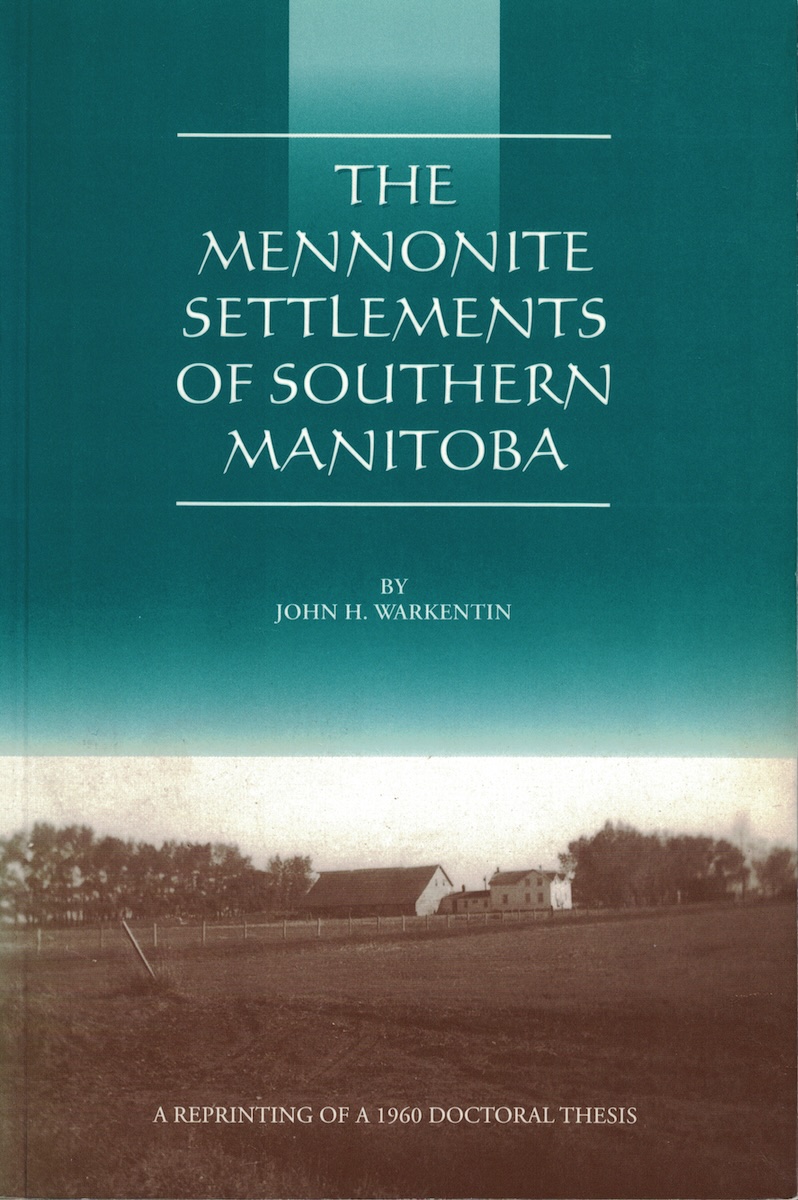The Mennonite Settlements of Southern Manitoba
John H. Warkentin
From the back cover: This is a reprinting of a classic work by noted Canadian historical geographer John H. Warkentin. Warkentin, a native of Lowe Farm and Steinbach, both in Manitoba, undertook this study for his 1960 doctoral dissertation at the University of Toronto. He went on to teach geography at United College (Winnipeg), the University of Manitoba and York University in Toronto. Prof. Warkentin is the author and editor of numerous historical geographies, atlases and articles. He is married to Germaine Warkentin and they are the parents to one daughter, Juliet. The Warkentins live in Toronto.
“In Canada few rural areas have a hidden landscape where one form of settlement has replaced another. … In Western Canada, the predominant landscape is the one that developed under the regular rectangular survey. But within this region there are two relatively small areas in which one settlement pattern has been abandoned for another. These are the … East and West Reserves, settled in the years from 1874 to 1880 by approximately 7,000 Mennonites who migrated from South Russia [present-day Ukraine] to Manitoba. … Perhaps nowhere else in North America has a peasant culture from Europe been so completely re-established. … These settlements, as a consequence, offer an interesting and important study in the geography of Canada, because they reveal how nucleated farm settlements fared amidst North American prairie agriculture. … This thesis is an endeavour to explain the changing geography of the Mennonite Reserves of Manitoba … from the 1870s to 1955 when the field work was done. … The thesis [is] simply a study of the changing geography of the Mennonite Reserves of Southern Manitoba … [a] geographical expression of the agricultural settlements of Western Canada [that] includes the farming and trading settlements, together with their fields, pastures, farmsteads, barns, street layouts, business premises and residences, and also the transportation and drainage facilities.” —John H. Warkentin, 1960

